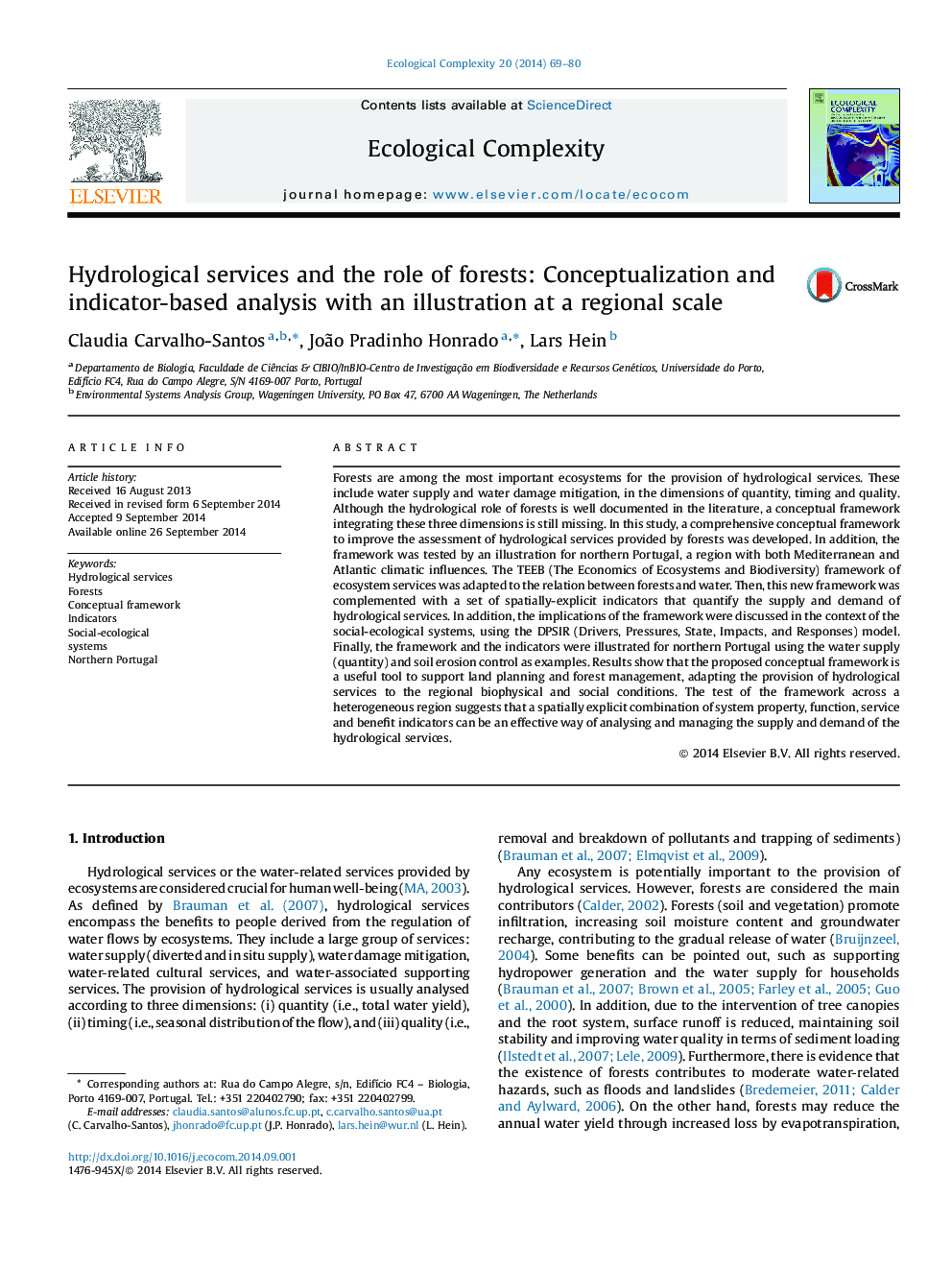| کد مقاله | کد نشریه | سال انتشار | مقاله انگلیسی | نسخه تمام متن |
|---|---|---|---|---|
| 4372358 | 1617094 | 2014 | 12 صفحه PDF | دانلود رایگان |
• Forests play a major role in the supply of hydrological ecosystem services.
• There are multiple effects of forests on hydrology, which are context-dependent.
• We provide a framework to analyze the effects of forests on hydrology.
• The framework is illustrated for a watershed in northern Portugal.
Forests are among the most important ecosystems for the provision of hydrological services. These include water supply and water damage mitigation, in the dimensions of quantity, timing and quality. Although the hydrological role of forests is well documented in the literature, a conceptual framework integrating these three dimensions is still missing. In this study, a comprehensive conceptual framework to improve the assessment of hydrological services provided by forests was developed. In addition, the framework was tested by an illustration for northern Portugal, a region with both Mediterranean and Atlantic climatic influences. The TEEB (The Economics of Ecosystems and Biodiversity) framework of ecosystem services was adapted to the relation between forests and water. Then, this new framework was complemented with a set of spatially-explicit indicators that quantify the supply and demand of hydrological services. In addition, the implications of the framework were discussed in the context of the social-ecological systems, using the DPSIR (Drivers, Pressures, State, Impacts, and Responses) model. Finally, the framework and the indicators were illustrated for northern Portugal using the water supply (quantity) and soil erosion control as examples. Results show that the proposed conceptual framework is a useful tool to support land planning and forest management, adapting the provision of hydrological services to the regional biophysical and social conditions. The test of the framework across a heterogeneous region suggests that a spatially explicit combination of system property, function, service and benefit indicators can be an effective way of analysing and managing the supply and demand of the hydrological services.
Journal: Ecological Complexity - Volume 20, December 2014, Pages 69–80
